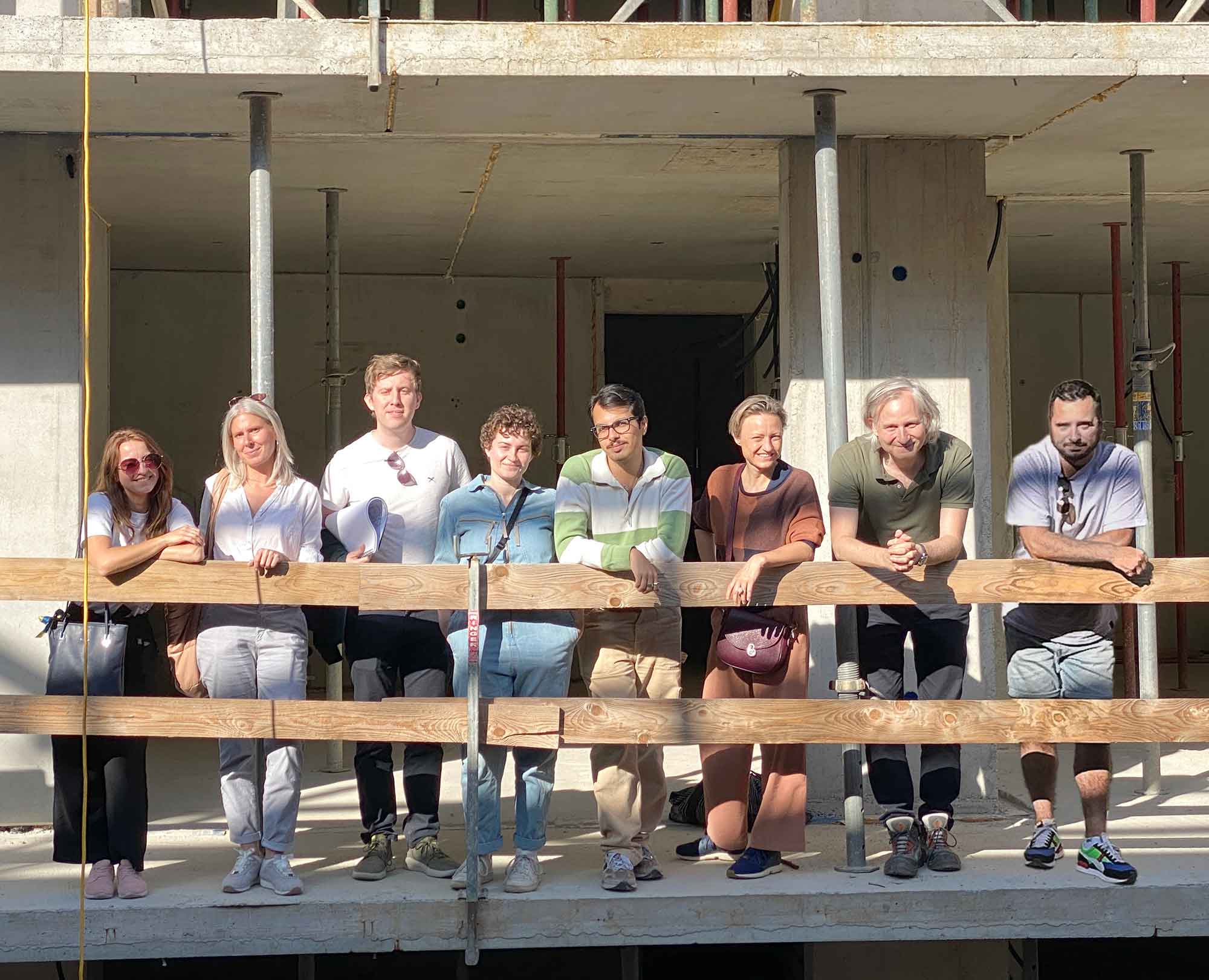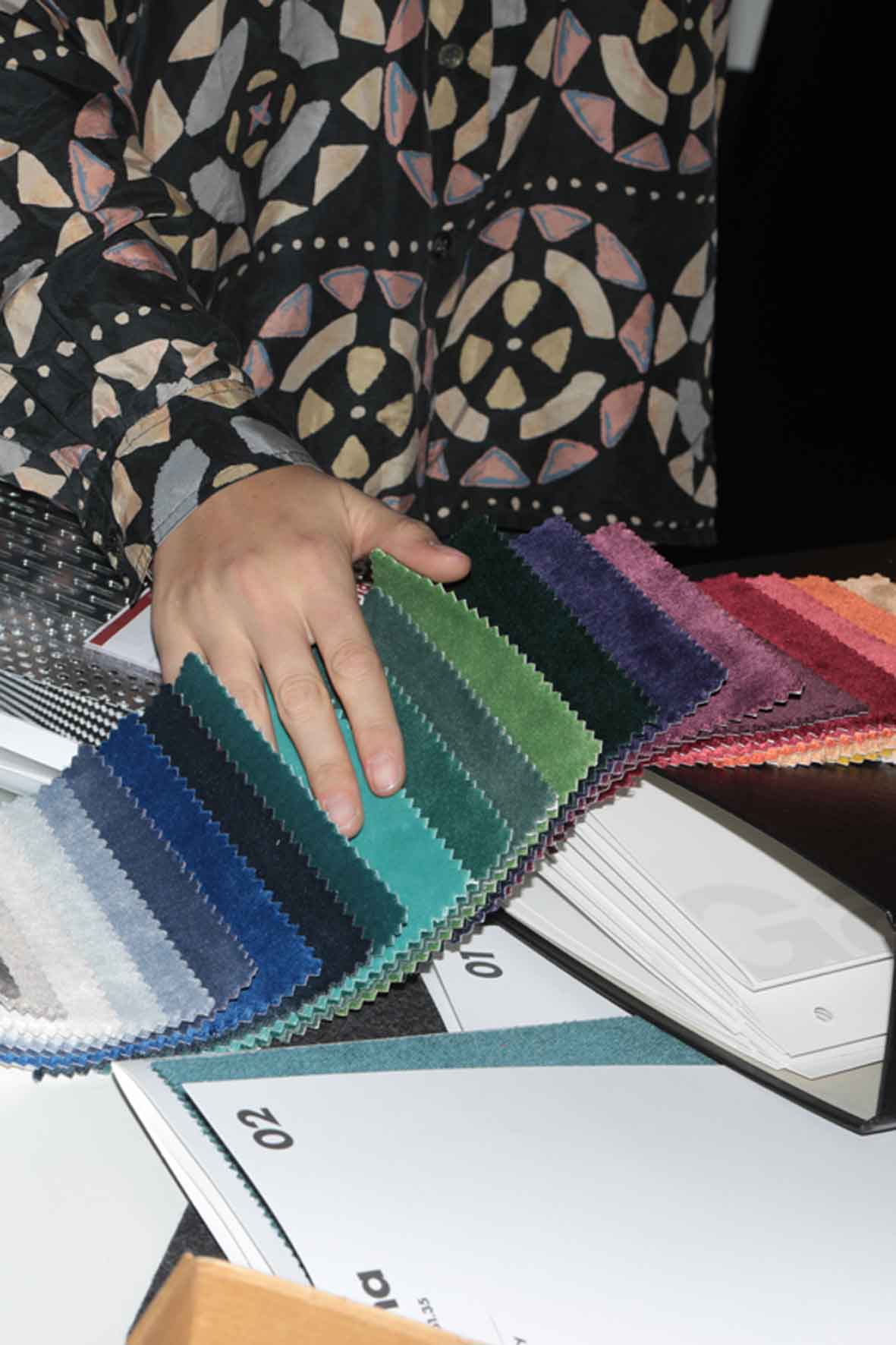Our field of activity ranges from residential and office buildings (Buwog headquarters) to inner-city sausage stands (“Bitzinger”), exhibition designs and artistic projects. Technical knowledge and experience accompany the implementation. Architecture and interior design are always closely intertwined. We have been implementing our quality standards as siblings together with the team since 2005.

/ Dialog /
Some houses are like old buildings even before they are finished. Swiss architects once called them Räumlinge. The conversation with them can also be imagined as a dream, with familiar figures and strange little animals. The foyer as an old dancing bear in a blue trouser suit. The staircase is as wide and narrow as necessary, double doors open and close, friendly or serious, the hall in an austere costume that only shimmers when it is turned away. Some things are inscrutable or curious, you will come across rooms that you like one day and not the next, niches that you will sometimes avoid.
At the end of a project, the dream should remain invisible; just as one still notices the wind in the rippling water.
/ Architecture /
When asked about the ten most important buildings, a fellow student once said that first he had to name the apartments and houses of his childhood and youth, and only then did works of architectural history come to mind. Even if there is a stubborn inwardness in the answer, every room in a house should be treated as if it were of particular importance.
If there is an eyeless language that some writers fear falling back into, how would one recognize an eyeless and silent building? Rooms that don’t answer and don’t want to show themselves, in the dream this could be a mute person without a face or age who leaves you perplexed. The Russian architect Alexander Brodsky called one of his buildings, which seemed to him to be less successful than others, a house that still lacks a soul.

/ Clothing /
Unfortunately, Johanna gave up her plan to sew a separate dress for each project due to time constraints. She regularly emphasizes that she will make up for it one day; a little implausible.
An older colleague likes to say that of the hundred houses he had built, not a single one was like any other. He didn’t set out to do that, it just happened that way. You can find that nonsensical, or happy.
The metaphor of the home as a tailor-made suit is more reminiscent of a bygone era. Both should still sit well today, sometimes be comfortable and practical, sometimes sober and functional, and usually look good at the same time.
/ Colors and butterflies /
We would like to set a rule that at least one room in every house should be painted dark. We are still looking for an incontestable derivation.
Until 1257, the Cistercians were forbidden to use colors on their buildings. Necessity is the mother of invention, and every nuance seemed worth the effort: even lead glass panes were now tinted using the elaborate grisaille technique in fine gradations from clear white to gray to anthracite. So the ban remained half-hearted and was eventually lifted. Colors returned to the surfaces of the buildings.
Sunday, Monday, Wednesday: homely and colorful, dark grey and mustard yellow.
Tuesday, Thursday: daring and agile, ore red and petrol blue.
Friday, Saturday: moody, cheerful, erratic and simple, perhaps more in mint green and water gray. Sketch of the colors and moods of a week.
Free and artistic elements can be scattered throughout a project like butterflies. They come into contact with the user, perhaps as the shoehorn, to slip into the fray. This could be a talking clock or a flying lampshade.
/ Bricolage /
As a traditional company name, the name Gebrüder Schuberth would have been obvious, but Gregor was unable to get away with it, and it would also have been incorrect.
How much contrast and contrast are necessary to create effect and drama is something we are always concerned with. Is it possible to imagine a harmony of opposites? A permanence and living force that grows from opposites? Whether you prefer to stir the uneven layers in Fru-Fru or spoon them out one after the other is a question of technique, taste or mood — in essence, our preoccupation.



